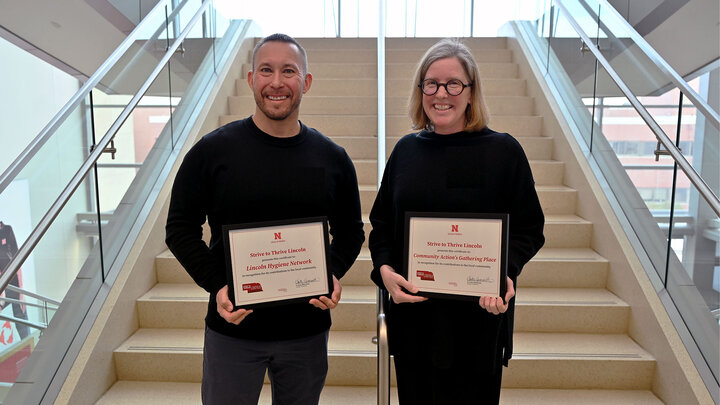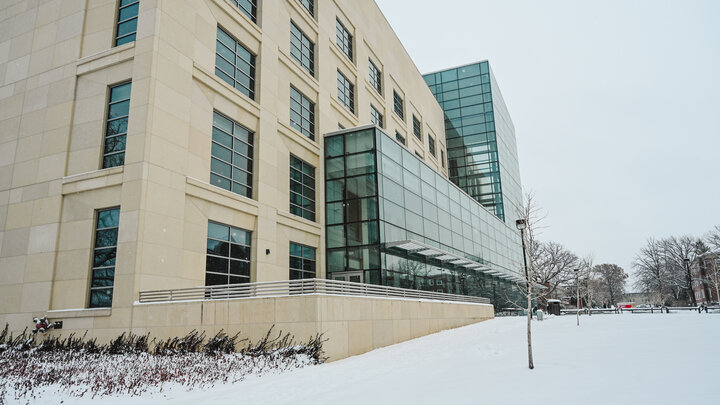A partnership between Norfolk Public Schools and Elkhorn Valley Bank & Trust made Nebraska history by opening in-school savings programs in every elementary school in the city. The districtwide initiative officially launched this fall with a grand opening celebration in November at the bank’s Norfolk headquarters.
“This is truly remarkable with seven in-school savings programs across all Norfolk elementary schools opening at one time,” said Jennifer Davidson, president of the Nebraska Council on Economic Education, which oversees the state’s in-school savings programs and other financial literacy initiatives. “That scale of commitment shows how Elkhorn Valley Bank is deeply rooted in the community and willing to invest in the financial futures of young people.”
Housed at the University of Nebraska–Lincoln College of Business, the Nebraska Council on Economic Education leads statewide efforts to promote economic and financial literacy through K–12 programs, curriculum support and educator training.
Davidson, who is also a Nebraska Bankers Association Faculty Fellow and associate professor of practice at the College of Business, noted how launching a single in-school savings branch typically requires six to 12 months of planning and coordination. With leadership from Kate Dolen, vice president of business development at Elkhorn Valley Bank, Norfolk moved quickly, opening programs in Bel Air, Grant, Jefferson, Lincoln Montessori, Washington, Westside and Woodland Park Elementary Schools.
“We are very excited about this partnership. By establishing Elkhorn Valley Bank Panther Branches at every elementary school in Norfolk, students will learn the value of saving in a fun and interactive environment,” said Aaron Otten, president and CEO of Elkhorn Valley Bank & Trust. “Older students will also learn some basic banking skills while working as tellers in their school’s branch. Financial literacy is a life skill everyone needs, and we look forward to helping students build those habits early—all while having a little fun along the way.”
Research shows that students who participate in in-school savings programs develop stronger long-term financial behaviors, Davidson said. Nebraska now has 73 in-school savings branches, including 16 new ones that opened this fall. During the 2024-25 school year, participating students collectively saved $448,698 through 6,543 individual students—real dollars representing lessons in lifelong financial responsibility.
“Our mission is to prepare all students to pursue their goals, and financial literacy is an essential skill for the future. The in-school savings program provides a unique opportunity for students to experience these concepts first-hand,” said Jared Oswald, director of teaching and learning. “We are thankful for community partners like Elkhorn Valley Bank who add these kinds of hands-on learning experiences to our educational program.”
The impact extends well beyond the classroom. Students not only learn how to save but also gain confidence handling money and understanding how banks work.
“My compliments to Elkhorn Valley Bank, Norfolk Public School educators and students, and the community of Norfolk for creating and participating in this valuable in-school savings program,” said Kelly Lammers, director of the Nebraska Department of Banking and Finance. “You have created a real-time experience in which students learn critical life skills that include how to control and access their money, that they can trust the banking system and what goes on behind the scenes in financial institutions. While not everyone will grow up to become a banker, understanding where your money is and the art of saving makes each of us and our community stronger today and in the future.”
Davidson emphasized that this level of collaboration demonstrates what can happen when a community fully commits to financial education.
“What Elkhorn Valley Bank and Norfolk Public Schools have accomplished together is extraordinary,” she said. “They’ve set a new standard for what’s possible when local institutions invest in young people’s financial futures.”




